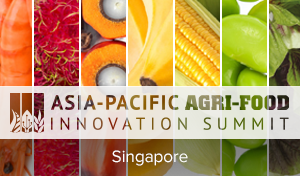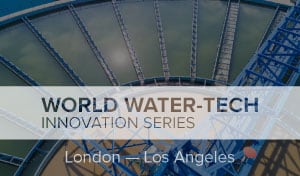Producing Seafood While Improving Surrounding Ecosystems: Pre-Summit Interview with Brian Tsuyoshi Takeda, CEO of Urchinomics
Urchinomics are passionate about harnessing the power of the natural world to help reverse negative ecological and economic impact. This drove them to develop a system to help kelp forest ecosystems heal, which had previously collapsed due to overgrazing sea urchins.
We caught up with Brian ahead of his fireside chat ‘Restorative Aquaculture: Replenishing Our Oceans Through Innovative Nature-Based Solutions‘ at the inaugural Blue Food Innovation Summit to find out why restorative aquaculture is a worthy business model beyond its environmental benefits.
What is restorative aquaculture? Tell us about your technology or process.
To us, restorative aquaculture means producing seafood while improving the surrounding ecosystems. The business model should be such that the more the venture succeeds, the better the environment becomes. There should be a positive, measurable, environmental externality that comes from restorative aquaculture practices.
At Urchinomics, we work with fishers to harvest ecologically destructive sea urchins that are overgrazing kelp forests, and re-home them into our proprietary, land-based aquaculture systems. We then feed them a naturally derived, sustainably produced feed, and convert them from an ecological pest, to one of the world´s most premium seafoods, or “uni”, in 6 to 12 weeks. And by removing overgrazing urchins from the ocean floor, we contribute to the restoration of kelp forests, sea grass meadows, and other vital marine ecosystems.
How does it fit into the wider blue food space, why is it important?
Restoring kelp forests and seagrass meadows means we help improve marine biomass and biodiversity through the restoration of three-dimensional habitats, bind and sequester carbon, reduce the effects of wave-related erosion, reduce of local effects of ocean acidification, and create meaningful jobs in coastal, rural communities. In essence, restorative sea urchin aquaculture, and the resulting restoration of kelp forests and sea grass meadows, makes blue food all the more possible, by building back the foundation necessary for all marine life to grow and flourish. 
What is exciting in restorative aquaculture now? How do you see it developing over the next five years?
I think we have a unique opportunity to show that, through restorative aquaculture, we can not only help change the world for the better, we can also make these changes globally scalable by making our solutions investible. In the past, restoration was a societal expense, borne by the state or philanthropists. Investment capital generally steered clear of such initiatives. But now, we have business models that restore marine ecosystems as a positive externality from profit maximizing activities. Can you imagine what the world could be like, if we could leverage the scale and power of capitalism to improve the state of our oceans? I think in 5 years, we will find many more such ventures not just in aquaculture, but also in agriculture and other industries, changing the world for the better while achieving profits.
Why is the Blue Food Innovation Summit an important date in your diary? Who are you hoping to meet?
Many of the world´s leaders in the blue food space are committed to attend the summit, so I would not miss it for the world!
Brian will be joined on our Restorative Aquaculture fireside chat by speakers from Builders Initiative and Blueyou Group. View the agenda to discover more.

 CLOSE
CLOSE






